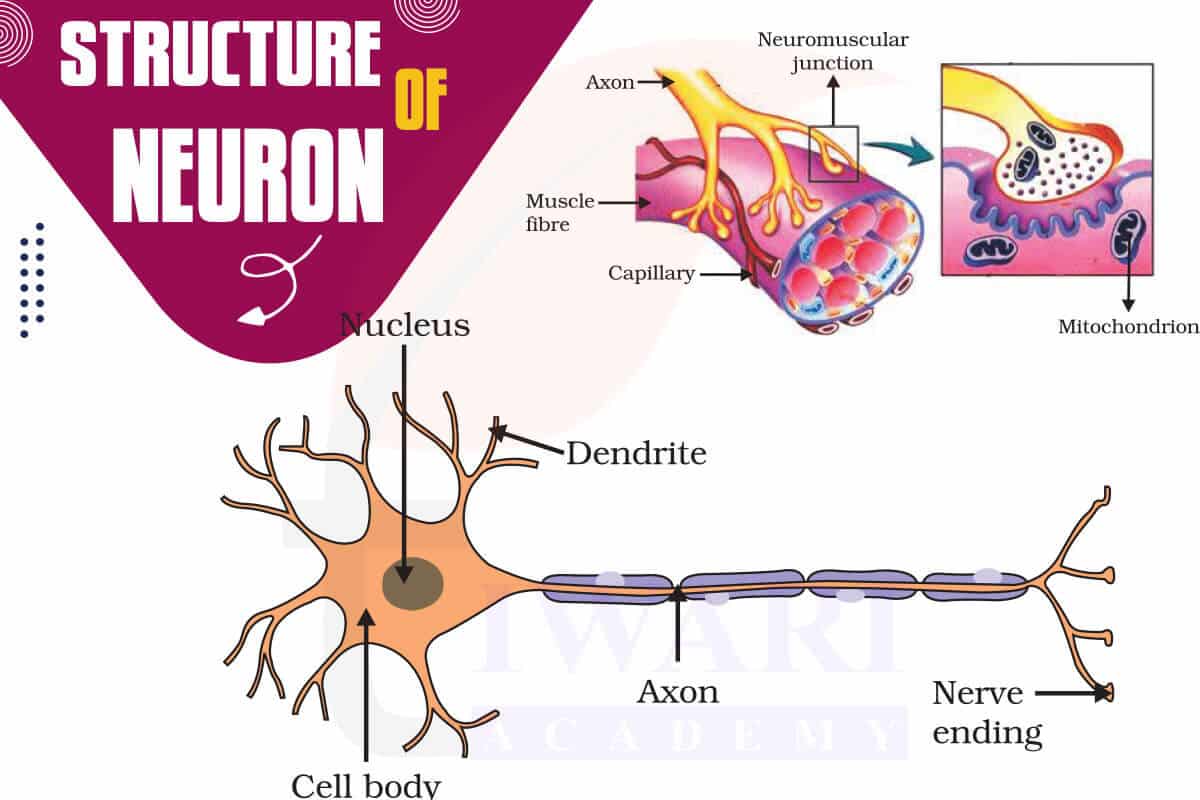Neurons, or nerve cells, are the fundamental units of the brain and nervous system, responsible for carrying messages throughout the body. They function by transmitting electrical and chemical signals. A neuron receives signals through its dendrites, processes them in the cell body, and sends impulses along the axon to other neurons, muscles, or glands, facilitating communication and response to stimuli.
Let’s discuss in detail
Basic Structure and Function of Neurons
Neurons, also known as nerve cells, are the building blocks of the nervous system. They are specialized cells designed to transmit information throughout the body. Each neuron consists of a cell body (soma), dendrites, and an axon. The cell body contains the nucleus and cytoplasm, dendrites receive incoming signals, and the axon carries signals away from the neuron.
Signal Reception and Integration
Dendrites, branching extensions from the neuron’s cell body, are responsible for receiving signals from other neurons. These signals are typically chemical in nature, released from the synaptic terminals of other neurons. Once received, these signals are converted into electrical impulses and transmitted to the cell body, where they are integrated and processed.

Action Potential and Signal Transmission
When the integrated signal in the neuron reaches a certain threshold, it triggers an action potential, a rapid electrical impulse that travels along the axon. This action potential is facilitated by the movement of ions across the neuron’s membrane through specialized channels. The axon, insulated by a myelin sheath in many neurons, ensures the rapid and efficient transmission of this electrical impulse.
Synaptic Transmission and Communication
At the end of the axon are terminal branches that form synapses with other neurons, muscles, or glands. When the action potential reaches these synaptic terminals, it prompts the release of neurotransmitters, chemicals that cross the synaptic gap and bind to receptors on the adjacent cell. This binding can either stimulate or inhibit the next cell, continuing the chain of communication.
Neuron Diversity and Complex Functions
There are various types of neurons, each with specific functions, such as sensory neurons, motor neurons, and interneurons. Sensory neurons respond to external stimuli like touch and sound, motor neurons control muscle movements, and interneurons connect neurons within the brain and spinal cord. Together, these neurons enable complex functions like thought, movement, sensation, and response to the environment.
In summary, neurons are essential for the functioning of the nervous system, facilitating communication throughout the body through electrical and chemical signals. Their ability to receive, process, and transmit information enables the body to respond to internal and external stimuli, making them crucial for survival and interaction with the environment.
Discuss this question in detail or visit to Class 10 Science Chapter 6 for all questions.
List of Questions of Class 10 Science Chapter 6



